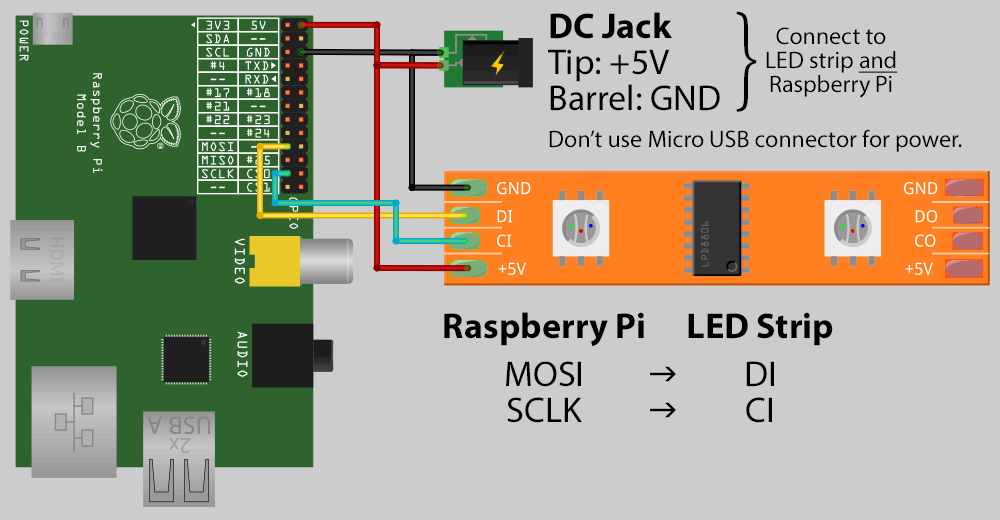Read the statement by Michael Teeuw here.
PIR sensor to turn on LED strip
-
@Egnos - Those look like they’ll do the job.
I have seen the connection between RPI and LED strip but I do not understand why the external 5V power supply must also be connected to the RPI, is it not enough to connect it to the LED strip?
The reason is that the output of the RPi can drive a handful of LEDs, but the Pi only has so much power flowing through it (specs say 50mA). Powering the LEDs separately will let the Pi handle the logic and the power supply handle the… well, power.
-
@bhepler said in PIR sensor to turn on LED strip:
The reason is that the output of the RPi can drive a handful of LEDs, but the Pi only has so much power flowing through it (specs say 50mA). Powering the LEDs separately will let the Pi handle the logic and the power supply handle the… well, power.
Thanks @bhepler I understood that the LEDs must be powered by an external 5V because the RPI generates a few mA and is not able to turn on an LED strip, but from the photo you can see that the external 5V (+ and -) also goes in parallel on the 5V in exit from the RPI.

For what reason?
Is this connection necessary (I no longer have 5V available on GPIO …)?Thank you very much
-
@Egnos Hi, as the picture says they use the 5V power source of the led strip to power the Pi, too.
Instead of powering the pi via USB they use the 5V GPIO pin.
If you want to power the Pi via USB instead be sure to connect the Ground of the strip with ground of the pi. -
@Egnos no. they are powering the pi from the 5v gpio pins as well as the LEDs.
the pin is tall.
-
@wishmaster270 said in PIR sensor to turn on LED strip:
If you want to power the Pi via USB instead be sure to connect the Ground of the strip with ground of the pi.
The GPIO ground or the power ground going into USB-C?
thanks
-
@Egnos gpio
-
@sdetweil thanks
